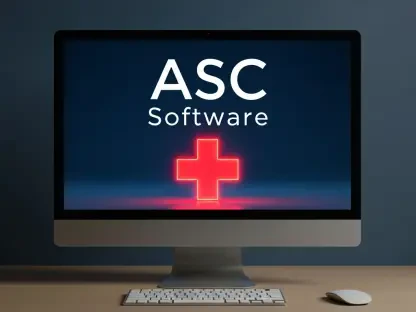The Software as a Service (SaaS) model has fundamentally changed the way businesses operate, offering a flexible and cost-effective alternative to traditional software. By hosting applications on remote servers and providing access over the Internet, SaaS eliminates the need for complex local installations and simplifies software deployment. This shift has driven significant growth and innovation across various sectors, positioning the SaaS market for continued expansion. Businesses are now leveraging the power of SaaS to streamline operations, enhance productivity, and drive digital transformation.
The Rise of SaaS: A Global Phenomenon
SaaS has seen widespread adoption globally, with 88% of companies utilizing cloud services in some form. This trend is expected to continue, with 85% of businesses projected to use SaaS-based applications by 2025. The SaaS market is forecasted to generate revenues of USD 328.20 billion in 2024, growing at a compound annual growth rate (CAGR) of 19.30%. This rapid growth is fueled by the need for scalable, efficient solutions that can be quickly integrated into business operations. The flexibility and ease of use that SaaS provides have made it an essential component in the modern digital economy.
The United States leads the global SaaS market, with an anticipated revenue of USD 187.20 billion in 2024, while other regions are also experiencing significant growth. For instance, the Asian market is expected to reach USD 38.35 billion in 2024, with a CAGR of 20.92%. Africa, though smaller in scale, is projected to grow from USD 2.35 billion in 2024 to USD 6.15 billion by 2029, reflecting a CAGR of 21.22%. This global expansion highlights the universal appeal of SaaS solutions and their ability to meet the diverse needs of businesses worldwide.
Leading SaaS Companies and Market Capitalization
The SaaS industry is dominated by several key players with substantial market capitalizations. Microsoft leads the pack with a market capitalization of USD 3,073.56 billion, followed by Apple at USD 2,786.36 billion and Alphabet (Google) at USD 2,086.90 billion. Other significant contributors include Oracle and Salesforce, with market capitalizations of USD 325.26 billion and USD 267.36 billion, respectively. These tech giants have been instrumental in driving the growth of the SaaS market, leveraging their extensive resources and innovative technologies to deliver cutting-edge solutions.
The United States is home to the largest number of SaaS companies, with 9,100 firms operating in the sector. The United Kingdom and Canada follow, with 1,500 and 992 companies, respectively. Other notable countries include Germany, India, France, China, Australia, and Brazil, each contributing to the global SaaS landscape. The concentration of SaaS companies in these countries underscores their role as hubs of technological innovation and development, paving the way for the next generation of SaaS applications.
Funding and Industry Focus
SaaS companies have attracted substantial funding, particularly in high-growth areas such as artificial intelligence (AI) and analytics. AI software has received USD 1,600 million in funding, while analytics software has garnered USD 1,400 million. Financial services and marketing software have also seen significant investments, with USD 1,300 million and USD 1,100 million, respectively. This robust funding landscape has enabled SaaS companies to accelerate their R&D efforts, develop new features, and expand their market reach.
Industries with large customer bases, such as AI software, analytics, eCommerce, and security software, are leading the charge. AI software alone serves nearly 3 billion customers, while analytics, eCommerce, and security software each cater to around 1.9 billion users. This widespread adoption underscores the critical role SaaS plays in modern business operations. By offering tailored solutions that address specific industry needs, SaaS providers are helping businesses achieve greater efficiency, productivity, and growth.
Consumer Trends in SaaS
Small to medium businesses (SMBs) are increasingly turning to SaaS solutions to cut costs and enhance efficiency. In 2024, about 78% of small businesses in the U.S. used at least one SaaS solution. This trend is reflected in global SaaS spending, which reached USD 195 billion in 2024, up by 20% from 2023. The growing prioritization of SaaS solutions for remote and hybrid work environments is a key driver of this increase. As businesses continue to adapt to changing work dynamics, the demand for SaaS applications that support collaboration, communication, and productivity is expected to rise.
Artificial intelligence and machine learning are becoming integral to SaaS offerings. In 2024, 52% of SaaS companies incorporated AI, with expectations of this rising to 60% by 2025. This integration is driven by the demand for predictive analytics and automation, which enhance the functionality and value of SaaS applications. By leveraging AI and machine learning, SaaS providers can deliver more personalized, intelligent solutions that help businesses make data-driven decisions and optimize their operations.
Data Privacy and Security
With the increasing prevalence of data breaches, security has become a major concern for SaaS users. In 2024, 80% of SaaS users cited security as a top priority. In response, SaaS companies invested approximately USD 12 billion in security measures to protect user data and ensure compliance with regulatory standards. These investments include the implementation of advanced encryption techniques, multi-factor authentication, and continuous monitoring to detect and respond to potential threats.
Vertical SaaS solutions, which cater to specific industries such as healthcare, finance, and manufacturing, are also on the rise. The vertical SaaS market was valued at USD 57 billion in 2023, with a projected CAGR of 15%. These industry-specific solutions address unique needs and challenges, providing tailored functionalities that enhance operational efficiency. By focusing on the nuances of particular sectors, vertical SaaS providers are able to deliver solutions that offer greater value and drive better outcomes for their customers.
SaaS Trends by Industry
Healthcare
The global healthcare SaaS market was worth USD 51.7 billion in 2024, growing at a CAGR of 19.5% through 2028. SaaS solutions in healthcare facilitate electronic health records (EHR), telemedicine, and patient management systems, improving the quality of care and operational efficiency. The adoption of SaaS in healthcare is driven by the need for streamlined data management, enhanced patient engagement, and compliance with regulatory requirements. By leveraging SaaS, healthcare providers can better manage patient information, coordinate care, and improve clinical outcomes.
Financial Services
The financial services sector has also seen significant growth in SaaS adoption. Valued at USD 45.6 billion in 2024, the financial services SaaS market is projected to grow at a CAGR of 16.2%, driven by technologies such as customer relationship management (CRM), fraud detection, and compliance. SaaS solutions in financial services help institutions manage customer interactions, detect fraudulent activities, and ensure adherence to regulatory standards. By adopting SaaS, financial institutions can enhance their operational efficiency, reduce costs, and deliver better services to their customers.
Retail and E-commerce
In retail and e-commerce, SaaS solutions are playing a critical role in managing inventory, optimizing supply chains, and engaging customers. The retail and e-commerce SaaS market is estimated at USD 37.4 billion in 2024, with a CAGR of 18.7% projected through 2029. SaaS applications in this sector enable businesses to track inventory in real-time, forecast demand, and personalize customer experiences. By leveraging SaaS, retailers can improve their operational efficiency, enhance customer satisfaction, and drive sales growth.
Manufacturing
The manufacturing sector is increasingly relying on SaaS solutions to integrate the Internet of Things (IoT) and real-time data analytics into their operations. Valued at USD 29.8 billion in 2024, the manufacturing SaaS market is expected to grow at a CAGR of 17.3%. SaaS applications in manufacturing facilitate predictive maintenance, supply chain optimization, and quality control. By adopting SaaS, manufacturers can enhance their production processes, reduce downtime, and improve product quality.
Education
The education sector has embraced SaaS for learning management systems (LMS) and virtual classrooms, which have become essential in the digital age. The education SaaS market reached USD 25.2 billion in 2024, with a CAGR of 20.1% expected through 2027. SaaS solutions in education provide tools for online course delivery, student assessment, and collaboration. By leveraging SaaS, educational institutions can deliver more engaging learning experiences, support remote learning, and improve student outcomes.
Real Estate
In real estate, SaaS solutions are used for property management, transactions, and customer relationship management. The real estate SaaS market was valued at USD 15.9 billion in 2024, with an anticipated CAGR of 15.8%. SaaS applications in this sector enable real estate professionals to manage properties, track transactions, and communicate with clients more effectively. By adopting SaaS, real estate companies can enhance their operational efficiency, streamline processes, and improve customer satisfaction.
Legal Services
The legal services sector is leveraging SaaS to streamline workflows, manage cases, and ensure compliance with legal standards. The legal SaaS market reached USD 12.4 billion in 2024, driven by demand for secure, efficient workflows, with a CAGR of 14.5%. SaaS solutions in legal services provide tools for document management, case tracking, and communication with clients. By adopting SaaS, legal professionals can enhance their productivity, reduce administrative burdens, and deliver better services to their clients.
Hospitality
In hospitality, SaaS solutions are used for reservations, customer relationship management, and operations management. The hospitality SaaS market was valued at USD 9.7 billion in 2024, with a CAGR of 16.9%. SaaS applications in this sector enable hospitality businesses to manage bookings, personalize guest experiences, and optimize operations. By leveraging SaaS, hospitality companies can improve customer satisfaction, increase operational efficiency, and drive revenue growth.
Transportation and Logistics
The transportation and logistics sector is adopting SaaS for fleet management, route optimization, and real-time tracking. The transportation and logistics SaaS market reached USD 8.3 billion in 2024, with a CAGR of 17.6%. SaaS solutions in this industry enable businesses to optimize their logistics operations, reduce costs, and improve delivery times. By adopting SaaS, transportation and logistics companies can enhance their operational efficiency, improve customer satisfaction, and achieve better outcomes.
Energy and Utilities
In the energy and utilities sector, SaaS solutions are used for renewable energy management, smart grid operations, and customer engagement. The energy and utilities SaaS market was valued at USD 6.5 billion in 2024, propelled by renewable energy and smart grid needs, with a CAGR of 15.2%. SaaS applications in this sector enable energy companies to manage resources more efficiently, optimize energy distribution, and engage with customers. By adopting SaaS, energy and utilities companies can enhance their operational efficiency, reduce costs, and support sustainable energy initiatives.
Consolidation and Key Findings
The SaaS industry is rapidly evolving, marked by substantial growth, technological advancements, and widespread adoption across numerous sectors and regions. Key drivers include the demand for cost-effective, scalable solutions, enhanced security, and specialized industry applications. By embracing AI and machine learning, SaaS providers are offering more intelligent and personalized services. SaaS companies are increasingly investing in data privacy and security measures to meet growing consumer concerns, while the shift towards remote and hybrid work environments continues to spur demand for collaborative and efficient software solutions.
Conclusion
The Software as a Service (SaaS) model has dramatically transformed business operations by providing a flexible, cost-effective alternative to traditional software solutions. Instead of requiring complex local installations, SaaS allows applications to be hosted on remote servers and accessed over the Internet. This simplification has not only streamlined software deployment but also fueled significant growth and innovation across multiple sectors, putting the SaaS market on a path for ongoing expansion.
Businesses are increasingly adopting SaaS to optimize their operations, boost productivity, and advance their digital transformation goals. The advantages of SaaS include lower upfront costs, as companies pay for the software via subscription rather than purchasing expensive licenses. Additionally, SaaS solutions are easily scalable, allowing businesses to adjust their software needs as they grow or change.
Another benefit is the reduction of IT burdens; with SaaS, there’s no need to manage hardware or software updates, freeing up IT resources for more strategic initiatives. Moreover, the cloud-based nature of SaaS facilitates greater collaboration and remote work, as employees can access necessary applications from anywhere with an Internet connection.
Overall, the SaaS model is revolutionizing the business landscape by making advanced software accessible, affordable, and easy to use, thereby driving efficiency and fostering innovation in ways that traditional software models could never achieve.









